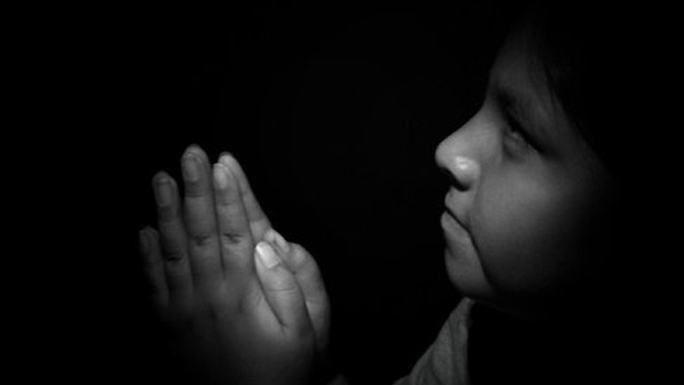You may remember the curious #Ashtag phenomenon from last year, where people posted pictures of themselves wearing the ashes from Ash Wednesday. #Ashtag became quite the cultural phenomenon, and was even covered by mainstream media sources that otherwise would have had no reason to devote any time to this tradition. Stirring up lively conversation about Lent is an admirable (and difficult) goal, and so for this, the #Ashtag had its uses.
But before we whip out our cell phones and even our selfie sticks this year (yes, selfie sticks are a thing), it’s worth reeducating ourselves regarding the nature of the selfie, and the purpose of Ash Wednesday. As the name would imply, selfies are inherently about ourselves: where we are, what we are doing, and what we happen to look like while doing that thing. While not the sign of moral decay that many old people might imagine (and by “old people,” I mean anyone older than myself), even the most enthusiastic selfie-taker has to admit that the focus is clearly the self.
The intent behind Ash Wednesday is in most ways the complete opposite. Ash Wednesday derives both its name and its meaning from the ashes which are spread on our foreheads in the sign of the cross. These ashes are a tangible way to remind ourselves of our mortality, hence the proclamation that accompanies this tradition, “From dust you have come, and to dust you will return.” Ash Wednesday also marks the beginning of Lent, a season of self-denial where we often forgo something of this world in order to focus instead on the things of God. The ashes themselves are the burnt remains of the palm leaves of the previous year’s Palm Sunday. The day remembers the moment when Jesus refuses to take up the crown of Israel, and instead takes up the sins of the world. So clearly, if Ash Wednesday is about anything, it is not the self.
For these reasons, I think it’s important that we think carefully before participating in the whole #Ashtag tradition. Yes, these pictures did manage to start a conversation about Lent, which is not an easy thing to do. But a selfie hardly seems like the appropriate way to mark a season of self-denial and humility where we remember that Jesus’ own motivation was anything but selfish.
But you might be asking, “So how are we supposed to talk about Lent with people if not with selfies?!” My suggestion would be to employ that most rusty of tools of cultural engagement: personal conversation. Perhaps instead of snapping a photo, we could actually explain ourselves to the curious, telling them what the ashes symbolize and why they are important to us. We could take this as an opportunity to connect with others, not with likes or favorites, and not through Twitter or Instagram, but you know—in a real face-to-face conversation. (I’m sorry for the snark, but there is something about selfies that puts me in a snarky mood.)
The #Ashtag phenomenon is actually indicative of a much larger problem, and that is our refusal to take Jesus’ teaching on public piety seriously. Jesus addresses the matter frequently and at length. Whether it is prayer, fasting, or generosity, these works are not to be done for the benefit of others to see. Instead, they are supposed to be offered as if unto God alone. In fact, Jesus instructs us to give not just generously but in complete secrecy, as if one hand could not know what the other is doing. Or in the case of fasting, we should fast in such a way that it actually fools others! These teachings on public piety, clearly directed towards the Pharisees and their many acts of public righteousness, constitute a good portion of the Sermon on the Mount.
But despite the clarity and frequency of Jesus’ teachings on the subject, we have largely cast them aside and instead chosen to broadcast every good work that we participate in. You would be hard-pressed to find a good deed nowadays that doesn’t find itself instantly posted on social media: the Ice Bucket Challenge that dominated Facebook, or the video of the philanthropist offering programming lessons to a homeless man. Every opportunity of service and generosity has become an opportunity to pump ourselves up a bit and to showcase our humanitarianism to the world. In fact, many fundraising websites even feature prominent buttons which will trumpet to the entire world that you gave to their organization. Public piety, it seems, has been encoded.
One might argue that publicizing good deeds not only encourages conversation, but also spurs others to give in turn. Given how much need there is in the world, a little self-aggrandizement seems like a small price to pay in order to spark generosity in others. Personally, I find this argument quite convincing.
But Jesus does not. He does not observe the works of the Pharisees and remark, “Meh. At least the Pharisees are getting others to give too, that’s a good thing.” Jesus makes no exception for such behavior because he knows how quickly even well intentioned actions can stray into legalism, and how difficult it is to then separate legalism from a true relationship with God. Our intentions might be pure, but are no match for the power of self-idolatry, which can quickly transform even the best-hearted individual into a self-serving tyrant. We are not the center of the universe, whether physically or morally, and when we place ourselves into that position, even for altruistic reasons, we are playing a role that only God can and should play.
So perhaps one commitment that we all need to make this Lent is reclaim the discipline of secret piety, to give sacrificially first and solely unto the Lord. After all, acts of piety are not an end unto themselves, but are acts of worship. As such, the audience we should consider first is not other people, but God.









